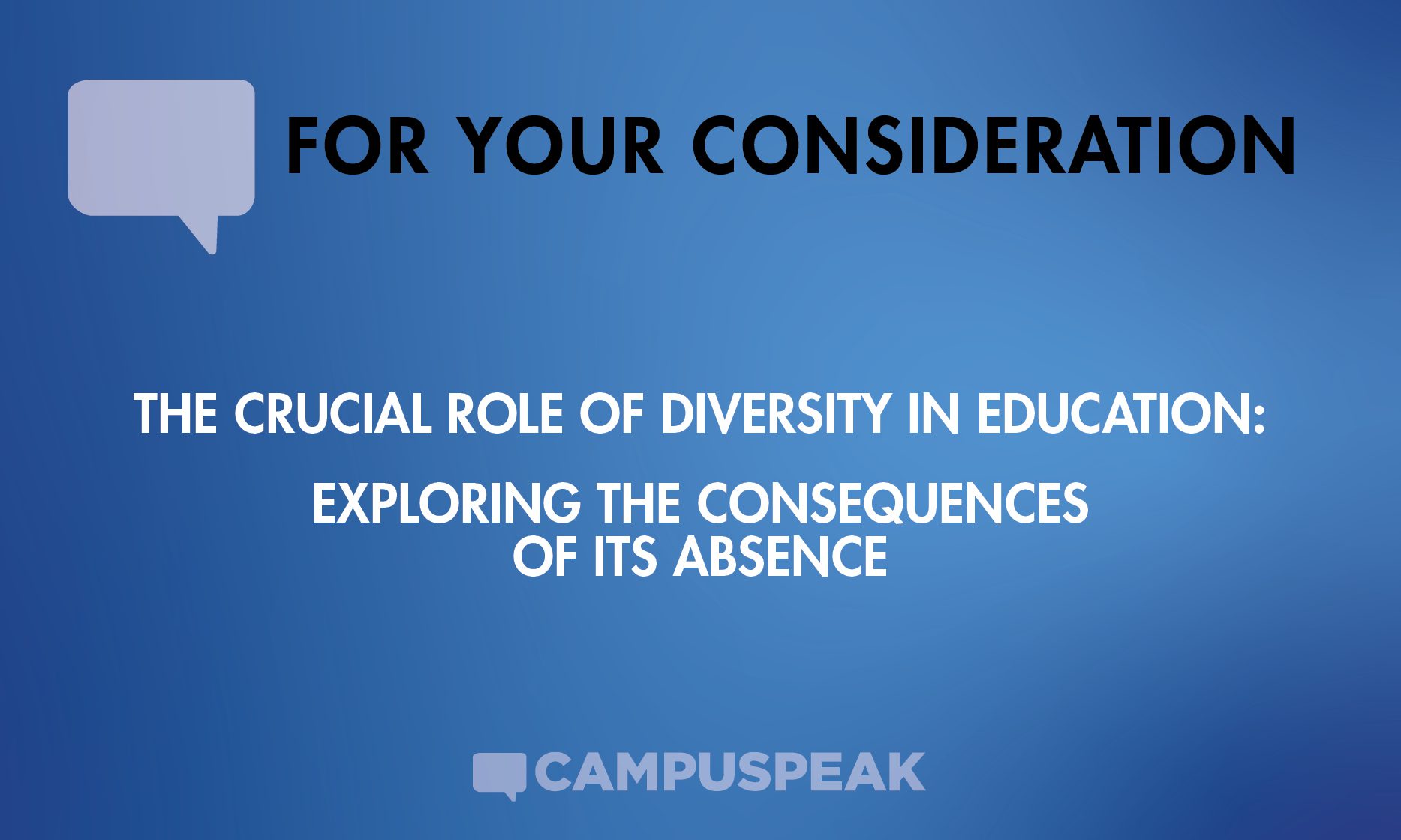
The Crucial Role of Diversity in Education
The Chronicle of Higher Education has been tracking Anti-DEI Legislation and since 2023, 85 bills have been introduced in 28 different states, 13 of which have been passed into law.
For 25 years, CAMPUSPEAK has provided impactful education to colleges and university campuses. Diversity, Equity, and Inclusion has been at the cornerstone of that impact. As the academic year comes to an end, and the landscape of DEI in education continues to shift rapidly, we wanted to reflect on the history of DEI in education and explore what education would look like without diversity, equity, and inclusion.
The origins of Diversity, Equity, and Inclusion (DEI) in the workplace and education can be traced back to the mid-1960s, during the civil rights movement. With the enactment of equal employment laws and affirmative action directives, DEI training emerged as a crucial focus. Notably, in higher education, pivotal strides in DEI were marked by significant events such as the passage of Title IX legislation in 1972, a milestone advocating for gender equity within academia. The enactment of the Americans with Disabilities Act in 1990 further solidified efforts towards inclusivity. Additionally, the Deferred Action for Childhood Arrivals (DACA) executive order in 2012 expanded opportunities for “Dreamers” to pursue higher education without the looming threat of deportation, reinforcing the commitment to inclusivity and diversity. More recently, the 2020 murders of George Floyd, Breonna Taylor, and other Black Americans ignited widespread protests and prompted colleges and universities to address systemic racism through enhanced DEI efforts, policing reforms, and public statements.
So what does higher education look like without diversity, equity, and inclusion?
To demonstrate the impact of having these concepts removed from education, we have removed the words diversity, equity, and inclusion and their derivatives & words often associated with DEI from the rest of our reflection. Highlight over the blank spaces to reveal the missing content.
In the mosaic of human society, diversity is the vibrant thread that weaves together the rich tapestry of perspectives, experiences, and cultures. Nowhere is the importance of diversity more evident than in education, where it serves as a cornerstone for fostering inclusive learning environments and preparing students for a multifaceted world.
It’s essential to recognize that diversity encompasses a broad spectrum beyond just racial or ethnic backgrounds. It encompasses differences in gender, socioeconomic status, abilities, languages, religions, and more. When we strip away this diversity, we risk severing the channels through which students gain exposure to varied viewpoints and develop essential skills for navigating an interconnected global landscape.
Removing diversity from education would hinder the development of cultural competence and empathy. Whereas, exposing individuals to various backgrounds cultivates an understanding of diverse perspectives and fosters empathy and respect for others. Without this exposure, students may struggle to relate to people outside their own cultural or social spheres, leading to a lack of empathy and an inability to collaborate effectively in diverse workplaces and communities.
Furthermore, diversity in education enriches the learning experience by challenging ingrained assumptions and fostering critical thinking. Interacting with peers who hold different beliefs or worldviews encourages students to question their perspectives and consider alternative viewpoints. This process is essential to fostering intellectual growth, one’s emotional intelligence, and developing the skills needed to navigate complex societal issues.
Beyond academic benefits, diversity in education also plays a crucial role in promoting social justice and equity. Historically marginalized groups, including people of color, individuals with disabilities, and those from low-income backgrounds, often face systemic barriers to educational access and success. By prioritizing diversity and inclusion, educational institutions can work to dismantle these barriers and create pathways for all students to thrive. In contrast, the absence of diversity in education perpetuates inequality and exacerbates social divisions.
Additionally, removing diversity from education neglects the importance of representation and role modeling. When students see themselves reflected in their teachers, curriculum, and peers, they are more likely to feel a sense of belonging and motivation to succeed. Lack of diversity in these areas can contribute to feelings of alienation and disengagement, particularly among underrepresented groups.
The consequences of removing diversity from education are far-reaching and profound. Beyond hindering academic and intellectual growth, it perpetuates inequality, stifles creativity, and undermines efforts to promote social justice and equity. Embracing diversity in all its forms is not just a moral imperative but also essential for preparing students to thrive in an increasingly interconnected and diverse world.
About CAMPUSPEAK
As we strive to create inclusive learning environments, CAMPUSPEAK firmly believes at the core of critical thinking and learning is Diversity, Equity, and Inclusion. We are proud to partner with communities and campus administrators who also value and see the benefits of elevating diverse voices, perspectives, and ideas.
If you are looking to host a program on your campus, but are unsure of how to approach the topics you desire, let CAMPUSPEAK provide consultation and insight on how to bring impact to your community. Explore all of our Diversity, Equity, and Inclusion speakers here.
